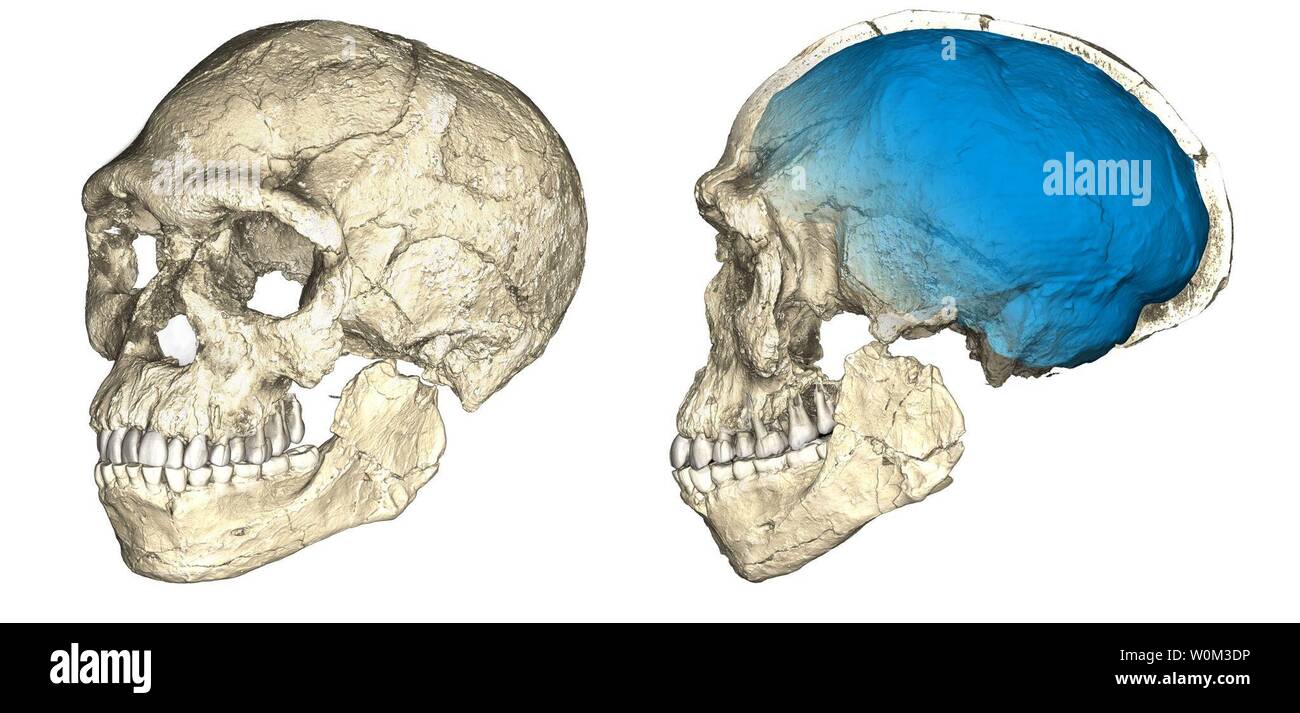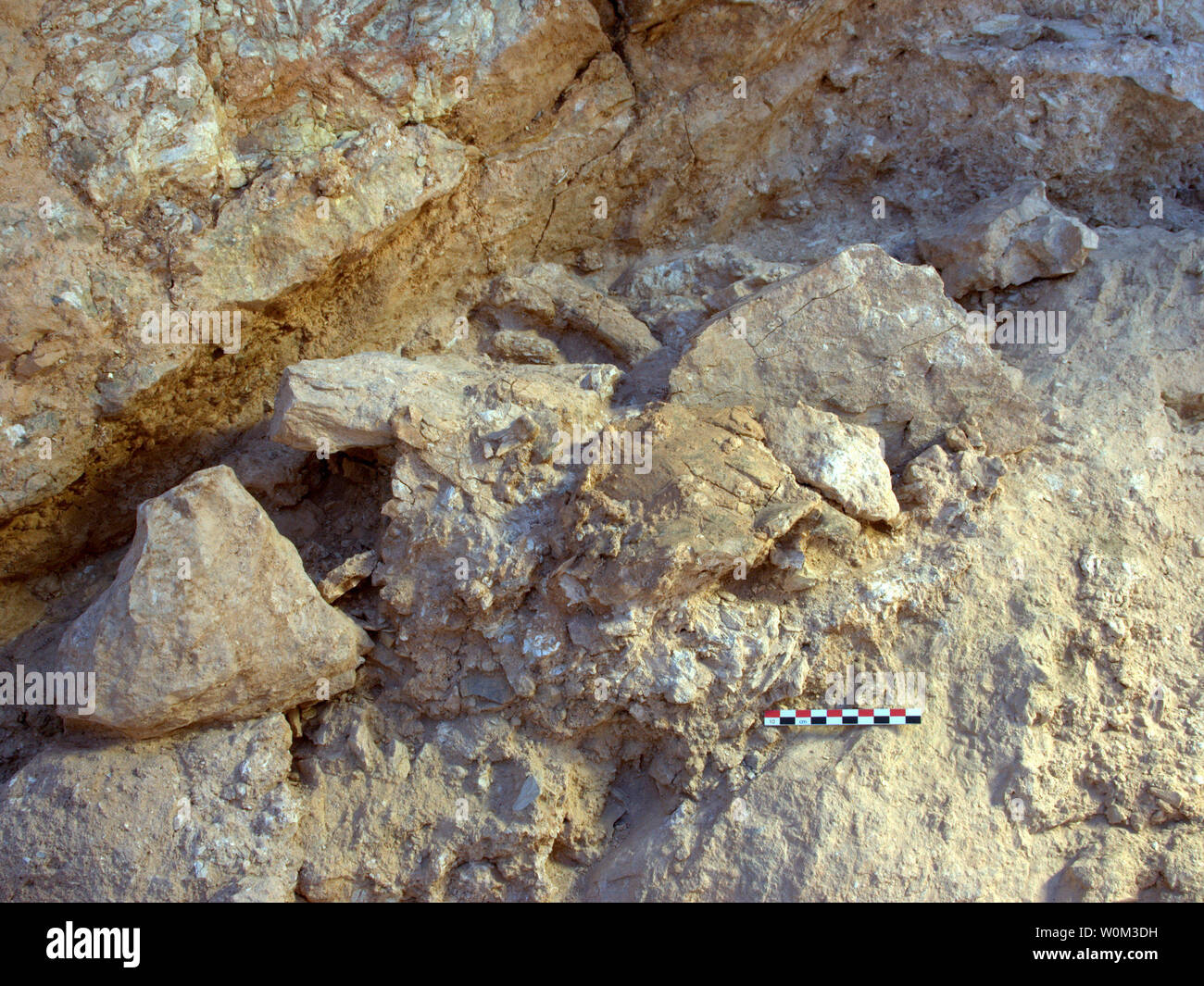Quick filters:
Jebel irhoud, morocco Stock Photos and Images
 Reconstruction of Homo sapiens who lived 160000 years ago and found in the Jebel Irhoud in Morocco, Evolution Stairs, Moesgaard Museum, Denmark Stock Photohttps://www.alamy.com/image-license-details/?v=1https://www.alamy.com/reconstruction-of-homo-sapiens-who-lived-160000-years-ago-and-found-in-the-jebel-irhoud-in-morocco-evolution-stairs-moesgaard-museum-denmark-image625192193.html
Reconstruction of Homo sapiens who lived 160000 years ago and found in the Jebel Irhoud in Morocco, Evolution Stairs, Moesgaard Museum, Denmark Stock Photohttps://www.alamy.com/image-license-details/?v=1https://www.alamy.com/reconstruction-of-homo-sapiens-who-lived-160000-years-ago-and-found-in-the-jebel-irhoud-in-morocco-evolution-stairs-moesgaard-museum-denmark-image625192193.htmlRF2Y93Y0H–Reconstruction of Homo sapiens who lived 160000 years ago and found in the Jebel Irhoud in Morocco, Evolution Stairs, Moesgaard Museum, Denmark
 The Jebel Irhoud (Morocco). The excavation area is visible as a dark notch a little more than half way down the ridge line sloping to the left. The Max Planck Institute for Evolutionary Anthropology announced their find on June 7, 2017. Photo by Shannon McPherron/MPI EVA Leipzig/UPI Stock Photohttps://www.alamy.com/image-license-details/?v=1https://www.alamy.com/the-jebel-irhoud-morocco-the-excavation-area-is-visible-as-a-dark-notch-a-little-more-than-half-way-down-the-ridge-line-sloping-to-the-left-the-max-planck-institute-for-evolutionary-anthropology-announced-their-find-on-june-7-2017-photo-by-shannon-mcpherronmpi-eva-leipzigupi-image258597299.html
The Jebel Irhoud (Morocco). The excavation area is visible as a dark notch a little more than half way down the ridge line sloping to the left. The Max Planck Institute for Evolutionary Anthropology announced their find on June 7, 2017. Photo by Shannon McPherron/MPI EVA Leipzig/UPI Stock Photohttps://www.alamy.com/image-license-details/?v=1https://www.alamy.com/the-jebel-irhoud-morocco-the-excavation-area-is-visible-as-a-dark-notch-a-little-more-than-half-way-down-the-ridge-line-sloping-to-the-left-the-max-planck-institute-for-evolutionary-anthropology-announced-their-find-on-june-7-2017-photo-by-shannon-mcpherronmpi-eva-leipzigupi-image258597299.htmlRMW0M3DR–The Jebel Irhoud (Morocco). The excavation area is visible as a dark notch a little more than half way down the ridge line sloping to the left. The Max Planck Institute for Evolutionary Anthropology announced their find on June 7, 2017. Photo by Shannon McPherron/MPI EVA Leipzig/UPI
 Drs. Shannon McPherron (left) and Abdelouahed Ben-Ncer discussing the new fossils finds from Jebel Irhoud (Morocco). The crushed skull (Irhoud 10) is just barely visible above the blue dustpan. The Max Planck Institute for Evolutionary Anthropology announced their find on June 7, 2017. Photo by MPI EVA Leipzig/UPI Stock Photohttps://www.alamy.com/image-license-details/?v=1https://www.alamy.com/drs-shannon-mcpherron-left-and-abdelouahed-ben-ncer-discussing-the-new-fossils-finds-from-jebel-irhoud-morocco-the-crushed-skull-irhoud-10-is-just-barely-visible-above-the-blue-dustpan-the-max-planck-institute-for-evolutionary-anthropology-announced-their-find-on-june-7-2017-photo-by-mpi-eva-leipzigupi-image258597296.html
Drs. Shannon McPherron (left) and Abdelouahed Ben-Ncer discussing the new fossils finds from Jebel Irhoud (Morocco). The crushed skull (Irhoud 10) is just barely visible above the blue dustpan. The Max Planck Institute for Evolutionary Anthropology announced their find on June 7, 2017. Photo by MPI EVA Leipzig/UPI Stock Photohttps://www.alamy.com/image-license-details/?v=1https://www.alamy.com/drs-shannon-mcpherron-left-and-abdelouahed-ben-ncer-discussing-the-new-fossils-finds-from-jebel-irhoud-morocco-the-crushed-skull-irhoud-10-is-just-barely-visible-above-the-blue-dustpan-the-max-planck-institute-for-evolutionary-anthropology-announced-their-find-on-june-7-2017-photo-by-mpi-eva-leipzigupi-image258597296.htmlRMW0M3DM–Drs. Shannon McPherron (left) and Abdelouahed Ben-Ncer discussing the new fossils finds from Jebel Irhoud (Morocco). The crushed skull (Irhoud 10) is just barely visible above the blue dustpan. The Max Planck Institute for Evolutionary Anthropology announced their find on June 7, 2017. Photo by MPI EVA Leipzig/UPI
 Some of the Middle Stone Age stone tools from Jebel Irhoud (Morocco). Pointed forms such as a-i are common in the assemblage. Also characteristic are the Levellois prepared core flakes (j-k). The Max Planck Institute for Evolutionary Anthropology announced their find on June 7, 2017. Photo by Mohammed Kamal/MPI EVA Leipzig/UPI Stock Photohttps://www.alamy.com/image-license-details/?v=1https://www.alamy.com/some-of-the-middle-stone-age-stone-tools-from-jebel-irhoud-morocco-pointed-forms-such-as-a-i-are-common-in-the-assemblage-also-characteristic-are-the-levellois-prepared-core-flakes-j-k-the-max-planck-institute-for-evolutionary-anthropology-announced-their-find-on-june-7-2017-photo-by-mohammed-kamalmpi-eva-leipzigupi-image258597295.html
Some of the Middle Stone Age stone tools from Jebel Irhoud (Morocco). Pointed forms such as a-i are common in the assemblage. Also characteristic are the Levellois prepared core flakes (j-k). The Max Planck Institute for Evolutionary Anthropology announced their find on June 7, 2017. Photo by Mohammed Kamal/MPI EVA Leipzig/UPI Stock Photohttps://www.alamy.com/image-license-details/?v=1https://www.alamy.com/some-of-the-middle-stone-age-stone-tools-from-jebel-irhoud-morocco-pointed-forms-such-as-a-i-are-common-in-the-assemblage-also-characteristic-are-the-levellois-prepared-core-flakes-j-k-the-max-planck-institute-for-evolutionary-anthropology-announced-their-find-on-june-7-2017-photo-by-mohammed-kamalmpi-eva-leipzigupi-image258597295.htmlRMW0M3DK–Some of the Middle Stone Age stone tools from Jebel Irhoud (Morocco). Pointed forms such as a-i are common in the assemblage. Also characteristic are the Levellois prepared core flakes (j-k). The Max Planck Institute for Evolutionary Anthropology announced their find on June 7, 2017. Photo by Mohammed Kamal/MPI EVA Leipzig/UPI
 Dr. Jean-Jacques Hublin on first seeing the new finds at Jebel Irhoud (Morocco). He is pointing to the crushed human skull (Irhoud 10) whose orbits are visible just beyond his finger tip. The Max Planck Institute for Evolutionary Anthropology announced their find on June 7, 2017. Photo by Shannon McPherron/MPI EVA Leipzig/UPI Stock Photohttps://www.alamy.com/image-license-details/?v=1https://www.alamy.com/dr-jean-jacques-hublin-on-first-seeing-the-new-finds-at-jebel-irhoud-morocco-he-is-pointing-to-the-crushed-human-skull-irhoud-10-whose-orbits-are-visible-just-beyond-his-finger-tip-the-max-planck-institute-for-evolutionary-anthropology-announced-their-find-on-june-7-2017-photo-by-shannon-mcpherronmpi-eva-leipzigupi-image258597297.html
Dr. Jean-Jacques Hublin on first seeing the new finds at Jebel Irhoud (Morocco). He is pointing to the crushed human skull (Irhoud 10) whose orbits are visible just beyond his finger tip. The Max Planck Institute for Evolutionary Anthropology announced their find on June 7, 2017. Photo by Shannon McPherron/MPI EVA Leipzig/UPI Stock Photohttps://www.alamy.com/image-license-details/?v=1https://www.alamy.com/dr-jean-jacques-hublin-on-first-seeing-the-new-finds-at-jebel-irhoud-morocco-he-is-pointing-to-the-crushed-human-skull-irhoud-10-whose-orbits-are-visible-just-beyond-his-finger-tip-the-max-planck-institute-for-evolutionary-anthropology-announced-their-find-on-june-7-2017-photo-by-shannon-mcpherronmpi-eva-leipzigupi-image258597297.htmlRMW0M3DN–Dr. Jean-Jacques Hublin on first seeing the new finds at Jebel Irhoud (Morocco). He is pointing to the crushed human skull (Irhoud 10) whose orbits are visible just beyond his finger tip. The Max Planck Institute for Evolutionary Anthropology announced their find on June 7, 2017. Photo by Shannon McPherron/MPI EVA Leipzig/UPI
 View looking south of the Jebel Irhoud (Morocco) site. The remaining deposits and several people excavating them are visible in the center. At the time the site was occupied by early hominins, it would have been a cave, but the covering rock and much sediment were removed by work at the site in the 1960s. The Max Planck Institute for Evolutionary Anthropology announced their find on June 7, 2017. Photo by Shannon McPherron/MPI EVA Leipzig/UPI Stock Photohttps://www.alamy.com/image-license-details/?v=1https://www.alamy.com/view-looking-south-of-the-jebel-irhoud-morocco-site-the-remaining-deposits-and-several-people-excavating-them-are-visible-in-the-center-at-the-time-the-site-was-occupied-by-early-hominins-it-would-have-been-a-cave-but-the-covering-rock-and-much-sediment-were-removed-by-work-at-the-site-in-the-1960s-the-max-planck-institute-for-evolutionary-anthropology-announced-their-find-on-june-7-2017-photo-by-shannon-mcpherronmpi-eva-leipzigupi-image258597294.html
View looking south of the Jebel Irhoud (Morocco) site. The remaining deposits and several people excavating them are visible in the center. At the time the site was occupied by early hominins, it would have been a cave, but the covering rock and much sediment were removed by work at the site in the 1960s. The Max Planck Institute for Evolutionary Anthropology announced their find on June 7, 2017. Photo by Shannon McPherron/MPI EVA Leipzig/UPI Stock Photohttps://www.alamy.com/image-license-details/?v=1https://www.alamy.com/view-looking-south-of-the-jebel-irhoud-morocco-site-the-remaining-deposits-and-several-people-excavating-them-are-visible-in-the-center-at-the-time-the-site-was-occupied-by-early-hominins-it-would-have-been-a-cave-but-the-covering-rock-and-much-sediment-were-removed-by-work-at-the-site-in-the-1960s-the-max-planck-institute-for-evolutionary-anthropology-announced-their-find-on-june-7-2017-photo-by-shannon-mcpherronmpi-eva-leipzigupi-image258597294.htmlRMW0M3DJ–View looking south of the Jebel Irhoud (Morocco) site. The remaining deposits and several people excavating them are visible in the center. At the time the site was occupied by early hominins, it would have been a cave, but the covering rock and much sediment were removed by work at the site in the 1960s. The Max Planck Institute for Evolutionary Anthropology announced their find on June 7, 2017. Photo by Shannon McPherron/MPI EVA Leipzig/UPI
 The first of our kind. Two views of a composite reconstruction of the earliest known Homo sapiens fossils from Jebel Irhoud (Morocco) based on micro computed tomographic scans of multiple original fossils. Dated to 300 thousand years ago these early Homo sapiens already have a modern-looking face that falls within the variation of humans living today. However, the archaic-looking virtual imprint of the braincase (blue) indicates that brain shape, and possibly brain function, evolved within the Homo sapiens lineage. The Max Planck Institute for Evolutionary Anthropology announced their find on Stock Photohttps://www.alamy.com/image-license-details/?v=1https://www.alamy.com/the-first-of-our-kind-two-views-of-a-composite-reconstruction-of-the-earliest-known-homo-sapiens-fossils-from-jebel-irhoud-morocco-based-on-micro-computed-tomographic-scans-of-multiple-original-fossils-dated-to-300-thousand-years-ago-these-early-homo-sapiens-already-have-a-modern-looking-face-that-falls-within-the-variation-of-humans-living-today-however-the-archaic-looking-virtual-imprint-of-the-braincase-blue-indicates-that-brain-shape-and-possibly-brain-function-evolved-within-the-homo-sapiens-lineage-the-max-planck-institute-for-evolutionary-anthropology-announced-their-find-on-image258597298.html
The first of our kind. Two views of a composite reconstruction of the earliest known Homo sapiens fossils from Jebel Irhoud (Morocco) based on micro computed tomographic scans of multiple original fossils. Dated to 300 thousand years ago these early Homo sapiens already have a modern-looking face that falls within the variation of humans living today. However, the archaic-looking virtual imprint of the braincase (blue) indicates that brain shape, and possibly brain function, evolved within the Homo sapiens lineage. The Max Planck Institute for Evolutionary Anthropology announced their find on Stock Photohttps://www.alamy.com/image-license-details/?v=1https://www.alamy.com/the-first-of-our-kind-two-views-of-a-composite-reconstruction-of-the-earliest-known-homo-sapiens-fossils-from-jebel-irhoud-morocco-based-on-micro-computed-tomographic-scans-of-multiple-original-fossils-dated-to-300-thousand-years-ago-these-early-homo-sapiens-already-have-a-modern-looking-face-that-falls-within-the-variation-of-humans-living-today-however-the-archaic-looking-virtual-imprint-of-the-braincase-blue-indicates-that-brain-shape-and-possibly-brain-function-evolved-within-the-homo-sapiens-lineage-the-max-planck-institute-for-evolutionary-anthropology-announced-their-find-on-image258597298.htmlRMW0M3DP–The first of our kind. Two views of a composite reconstruction of the earliest known Homo sapiens fossils from Jebel Irhoud (Morocco) based on micro computed tomographic scans of multiple original fossils. Dated to 300 thousand years ago these early Homo sapiens already have a modern-looking face that falls within the variation of humans living today. However, the archaic-looking virtual imprint of the braincase (blue) indicates that brain shape, and possibly brain function, evolved within the Homo sapiens lineage. The Max Planck Institute for Evolutionary Anthropology announced their find on
 Two of the new Jebel Irhoud (Morocco) fossils in situ as they were discovered during excavation. In the center of the image, in a slightly more yellow brown tone, is the crushed top of a human skull (Irhoud 10) and visible just above this is a partial femur (Irhoud 13) resting against the back wall. Not visible behind the pointed rock (between the femur and the skull) is the mandible (Irhoud 11). The scale is in centimeters. The Max Planck Institute for Evolutionary Anthropology announced their find on June 7, 2017. Photo by Steffen Schatz/MPI EVA Leipzig/UPI Stock Photohttps://www.alamy.com/image-license-details/?v=1https://www.alamy.com/two-of-the-new-jebel-irhoud-morocco-fossils-in-situ-as-they-were-discovered-during-excavation-in-the-center-of-the-image-in-a-slightly-more-yellow-brown-tone-is-the-crushed-top-of-a-human-skull-irhoud-10-and-visible-just-above-this-is-a-partial-femur-irhoud-13-resting-against-the-back-wall-not-visible-behind-the-pointed-rock-between-the-femur-and-the-skull-is-the-mandible-irhoud-11-the-scale-is-in-centimeters-the-max-planck-institute-for-evolutionary-anthropology-announced-their-find-on-june-7-2017-photo-by-steffen-schatzmpi-eva-leipzigupi-image258597293.html
Two of the new Jebel Irhoud (Morocco) fossils in situ as they were discovered during excavation. In the center of the image, in a slightly more yellow brown tone, is the crushed top of a human skull (Irhoud 10) and visible just above this is a partial femur (Irhoud 13) resting against the back wall. Not visible behind the pointed rock (between the femur and the skull) is the mandible (Irhoud 11). The scale is in centimeters. The Max Planck Institute for Evolutionary Anthropology announced their find on June 7, 2017. Photo by Steffen Schatz/MPI EVA Leipzig/UPI Stock Photohttps://www.alamy.com/image-license-details/?v=1https://www.alamy.com/two-of-the-new-jebel-irhoud-morocco-fossils-in-situ-as-they-were-discovered-during-excavation-in-the-center-of-the-image-in-a-slightly-more-yellow-brown-tone-is-the-crushed-top-of-a-human-skull-irhoud-10-and-visible-just-above-this-is-a-partial-femur-irhoud-13-resting-against-the-back-wall-not-visible-behind-the-pointed-rock-between-the-femur-and-the-skull-is-the-mandible-irhoud-11-the-scale-is-in-centimeters-the-max-planck-institute-for-evolutionary-anthropology-announced-their-find-on-june-7-2017-photo-by-steffen-schatzmpi-eva-leipzigupi-image258597293.htmlRMW0M3DH–Two of the new Jebel Irhoud (Morocco) fossils in situ as they were discovered during excavation. In the center of the image, in a slightly more yellow brown tone, is the crushed top of a human skull (Irhoud 10) and visible just above this is a partial femur (Irhoud 13) resting against the back wall. Not visible behind the pointed rock (between the femur and the skull) is the mandible (Irhoud 11). The scale is in centimeters. The Max Planck Institute for Evolutionary Anthropology announced their find on June 7, 2017. Photo by Steffen Schatz/MPI EVA Leipzig/UPI